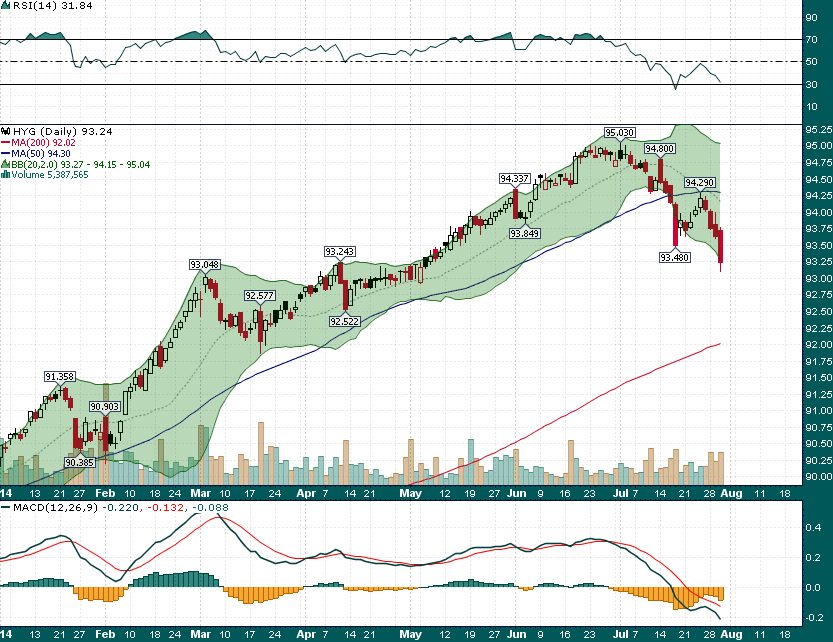A tour de force post from Lance Roberts on the end of QE: “The End of QE: Some Common Misunderstandings”
After delving into the history and shortcomings of the Federal Reserve’s 5+ year QE program, Mr. Roberts concludes with the following:
“The point here is simple. The ending of the current QE program is an effective “tightening” of monetary policy SIMPLY from the reduction of liquidity that has been fueling the rise of asset prices over the last 5 years. However, when that tightening is combined with an increase in interest rates, it becomes an outright “constriction.”
The risk to investors is that with asset prices extremely elevated, particularly in the “junk bond” arena, an increase in interest rates, combined with any slowdown in economic growth, could lead to a rush for the exits. While most are focused on a correction in elevated stock market prices, I think the real risk lies in the “high yield” space where yields are at historic lows and complacency reigns. Anything that upsets the delicate balance of confidence could lead to a panic based selloff that would resemble the 2008 financial crisis.”
From my vantage point there are a couple of questions within whose answers lie the key to the whole equation. Will interest rates necessarily rise simply because the Fed has ceased its asset purchases? To this question I believe the answer is an emphatic NO. Long term interest rates are much more dependent upon economic growth and inflation expectations, neither of which show any real signs of a sustainable uptick.
Is the economy gathering enough steam organically for the Fed to begin raising rates? To this question I believe the answer is also an emphatic NO.
Therefore, I believe the most likely scenario for markets is an extended period of sideways to lower action in equities and a sideways oscillation in long term rates (3-4% range on the 30-year Treasury Bond). Most of the recent rise in equities has likely priced in all of the good news for the foreseeable future. Meanwhile, for the yield on the 30-year to fall below 3% there would have to be a real threat of deflation (highly unlikely), and for long rates to breakout to the upside we would have to see a persistent uptick in inflation expectations (also unlikely).
The real test for the legacy of the Fed’s QE programe will eventually come when an unexpected negative catalyst hits markets and the Fed is no longer in a position to ease/stimulate with any real & sustainable effect. It is this latter situation which leaves equities and other risk assets such as high-yield corporate bonds particularly vulnerable and extremely unattractive from a risk/reward standpoint from current valuation levels.
Don’t look now but the high-yield space has begun to roll over in recent weeks….
